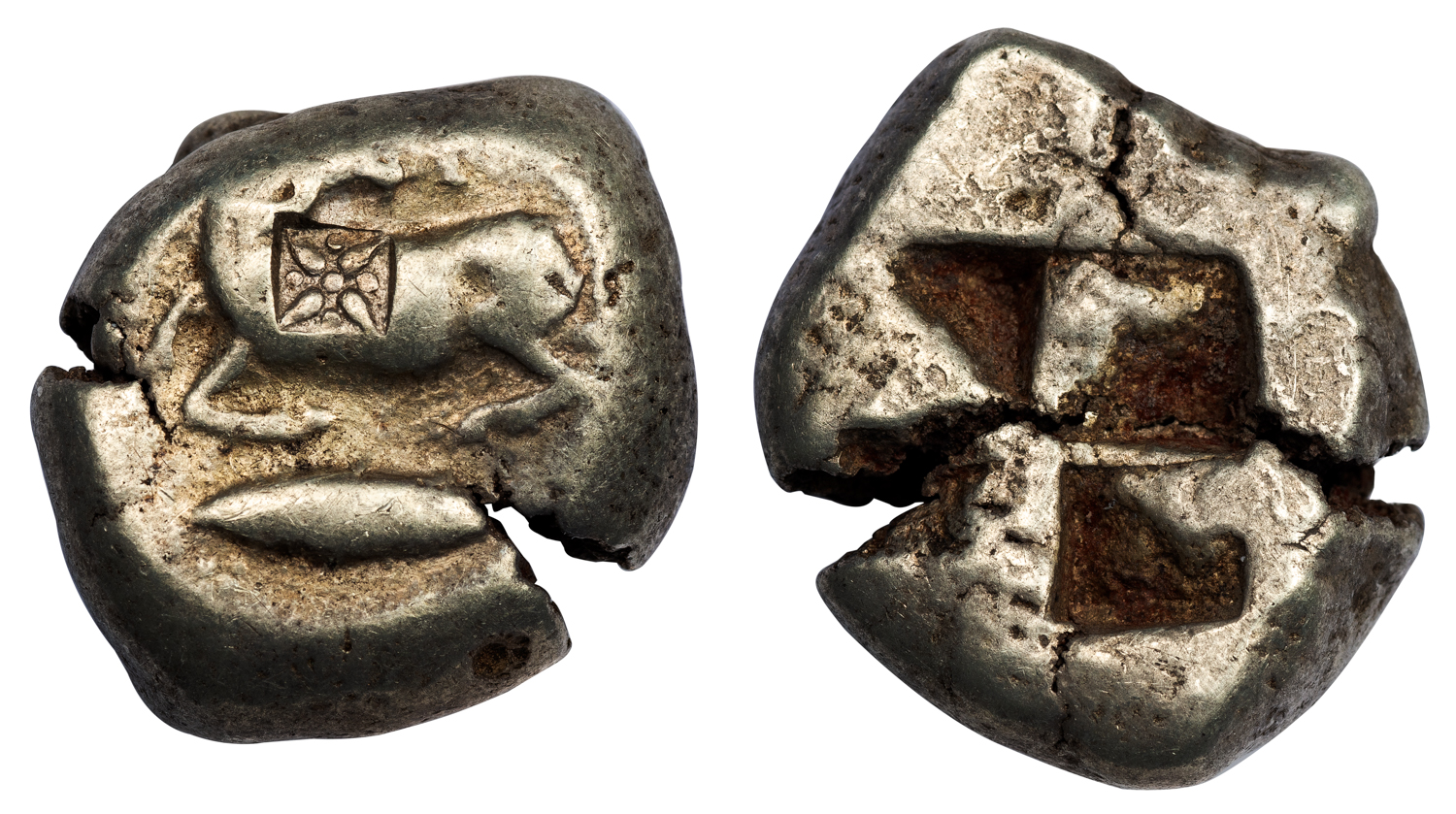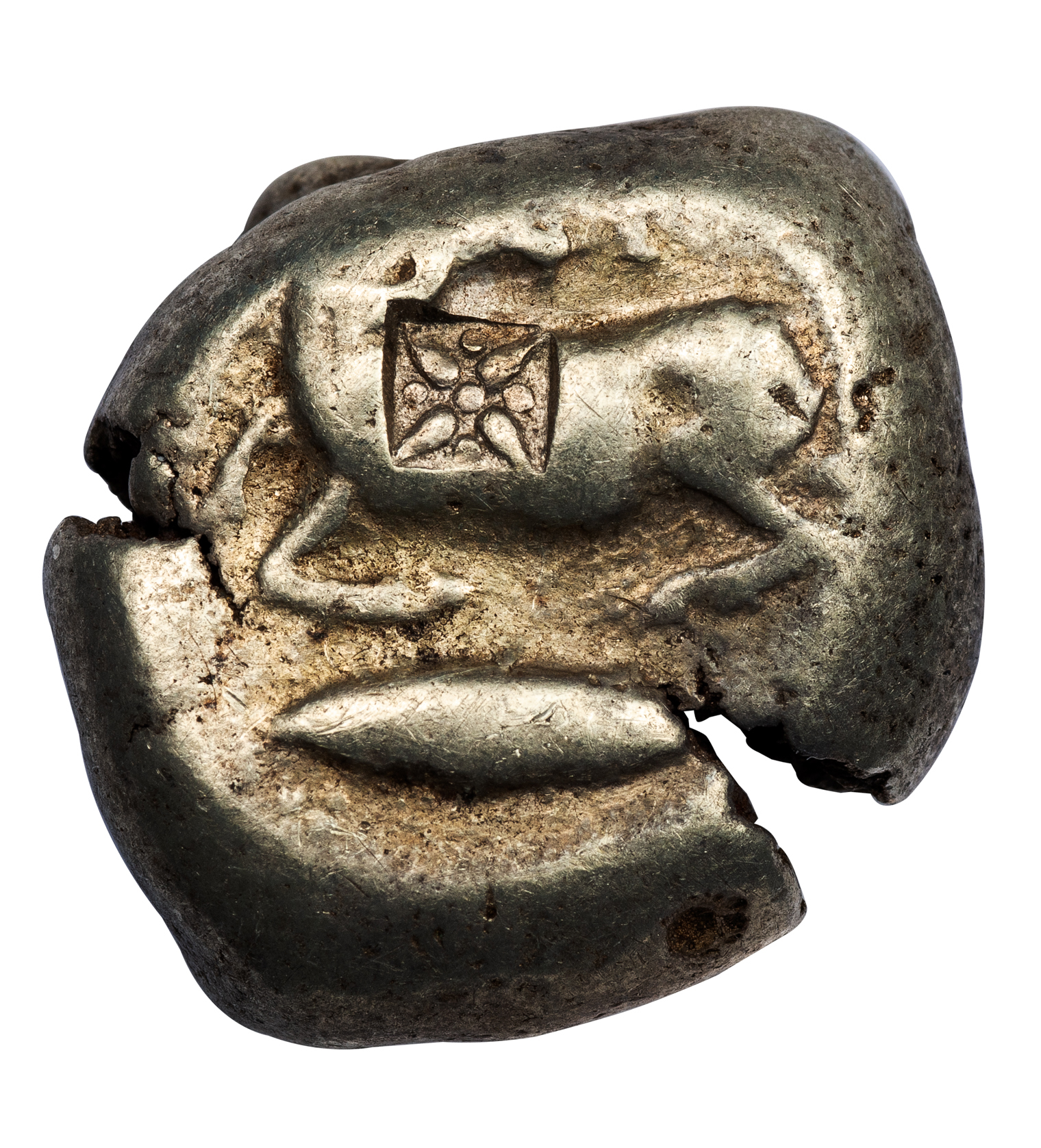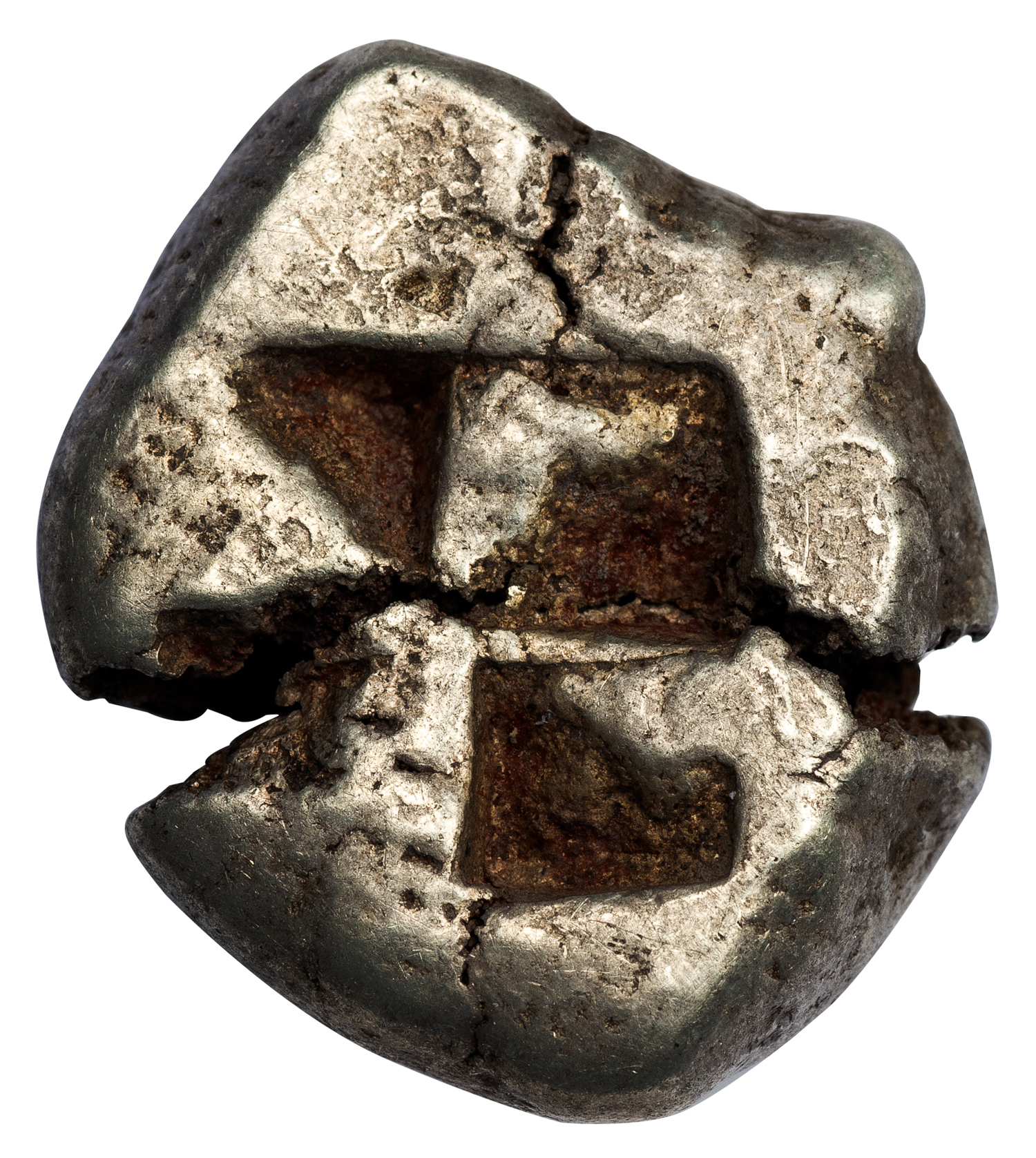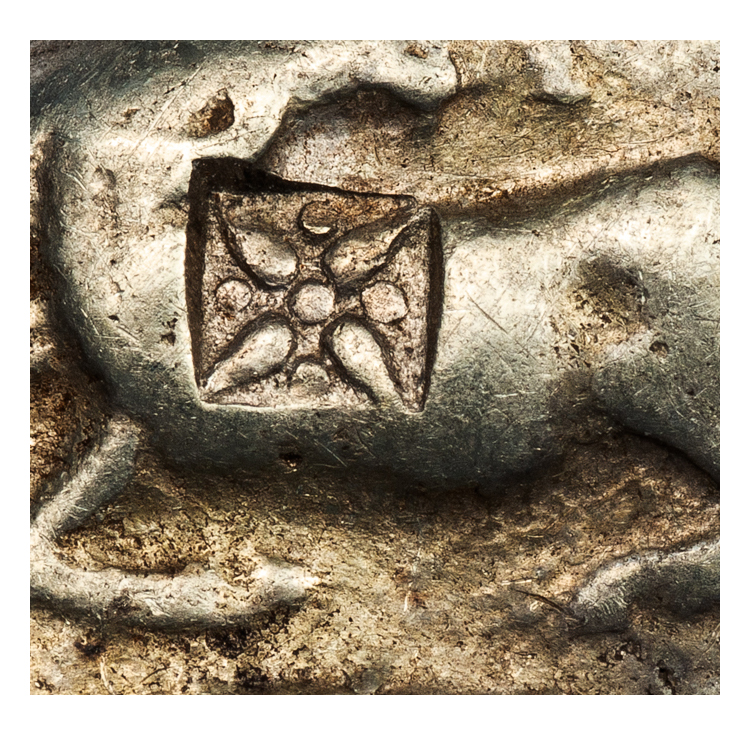CYZICUS ELECTRUM STATER – SEATED RAM ISSUE WITH VERY RARE STAR COUNTERMARK – VF GREEK MYSIA COIN (Inv. 17090)
$4,550.00
17090. MYSIA. CYZICUS. Ca. 550–450 BC.
Electrum Stater, 16.04 g, 21 mm. Issue of 550–500 BC.
Obv. Ram seated left, head looking right, tunny below. Rev. Quadripartite incuse square.
Von Fritze 47; Boston MFA 1419.
Ex Siren Collection.
VF, planchet cracks, with an extremely rare square countermark featuring a star.
This stater represents a new addition to a very elite club of Cyzicene electrum coins struck in the period c. 550–500 BC and countermarked with an incuse square containing a star of four rays with pellets between the rays. The same punch appears to have been used on staters depicting the forepart of a lioness devouring prey (Von Fritze I, 41) and the forepart of a winged boar (Von Fritze I, 61). The fact that it is also found on a fourrée myshemihekte featuring the head of Perseus (Leu, Web Auction 14, 12/12/2020, 304) suggests that the countermark was probably not applied as a guarantee of value. More likely it served as a banker’s mark, or as a means of indicating ownership.
The star type used for the punch is very suggestive of Miletus, a city that frequently used a stellate pattern on the reverse of its coins in the sixth century BC. However, the Milesian star usually involves four rays with a three–lobed ornament between the rays. Interestingly, the size of the punch and the division of the rays by pellets closely matches the reverse punches used for certain silver hemiobols struck at an uncertain mint in the fifth century BC (e.g., CNG Electronic Auction 287, 9/26/2012, 217). The ultimate origin of the punch remains enigmatic.




